How the Brain functions and what can go wrong
Here are brain diagrams which distinguish between three core brain functions. How each works and interacts provides an insightful glimpse into the workings of the healthy and unhealthy brain.
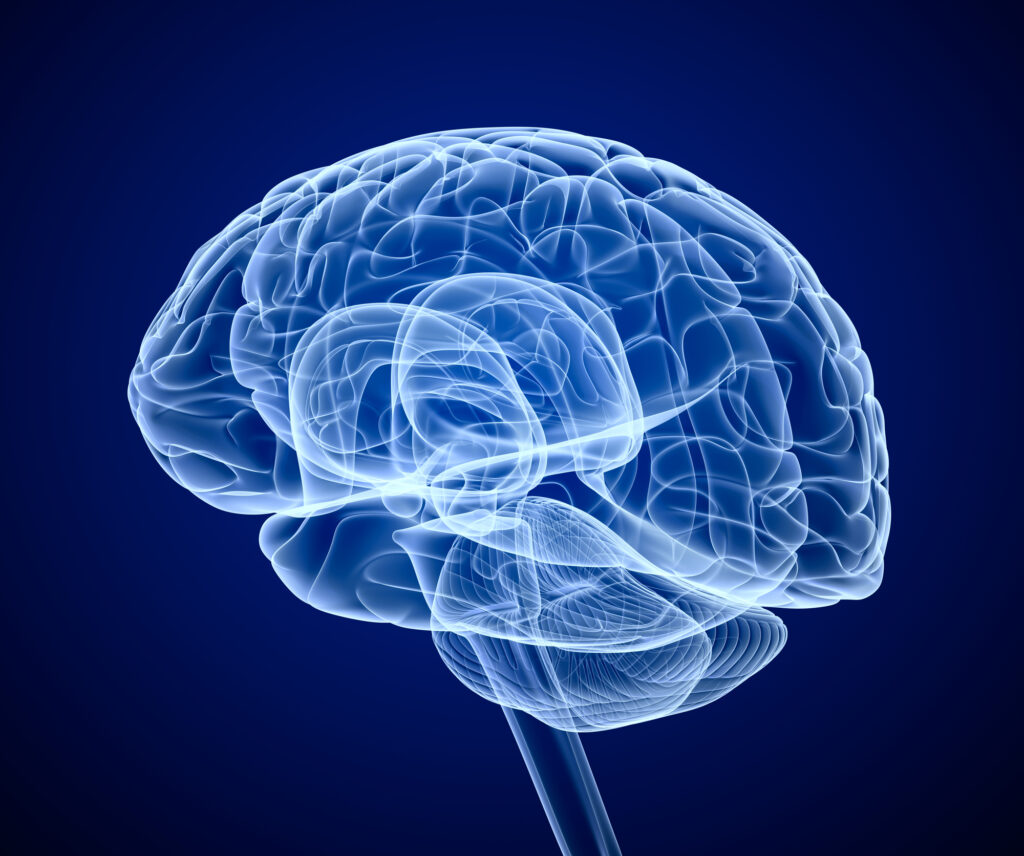
There are three crucial functions to the human brain and how each part works and relates to each other part can explain how many serious mental problems arise. These parts are Conscious Executing, Unconscious Processing and Flight & Fight.
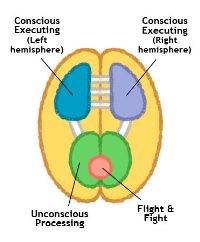
Conscious Executing
Left hemisphere (CE.L) and Right hemisphere (CE.R)
This is the pre-frontal cortex which processes imagination and cognition where emotions are under control and so are consciously useful. The prefrontal cortex also holds information not currently in the environment, whose central role is to create the “mental sketch pad”.
It is the slowest of the three levels of the brain. Therefore the learning environment must be absent of threats, or the brain will “downshift” into its more primitive parts.
Each hemisphere of the prefrontal cortex processes differently.
The left brain thinks methodically and likes to organize and categorize information from the environment logically and sequentially. It is verbal and connects new information with old, to make sense. The right brain “thinks” holistically in pictures and is creative. The right learns kinaesthetically through the body and functions with the present and is non verbal.
Unconscious processing (UP)
This is the Default Network. It is always active and supports Conscious Executing, where daydreaming, creativity and memory retrieval occurs. It provide the essential context that can give meaning to what is happening now and if used properly facilitates a continuous two flow back and forth to the prefrontal cortex. In accessing UP, we are in the REM state.
Flight & Fight (FF)
This is the primitive brain and Limbic system, where emotional responses are crude, automatic and overwhelming. We “downshift” when responding to life-threatening conditions. Then, action takes place without thinking and learning is impossible. Language is limited to yells, screams, expletives. A part of the limbic system, the hippocampus, holds long-term memory.
Understanding the relationships between these three brain functions or parts – the blue/grey, green and pink/red – is to understand much mental distress and “mental illness”.
Working Well
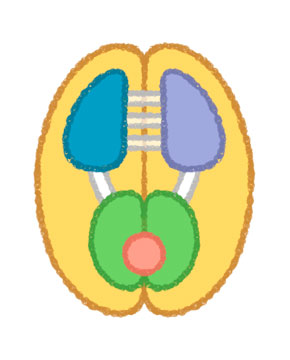
A normal emotionally healthy brain has a good balance between all three. Critically, there is an easy relationship between Conscious Executing (CE) and Unconscious Processing (UP) with Flight and Fight (FF) quiescent and calm.
This means that action to get needs met is easy, neither overwhelmed by a flaring up of a crude FF or limited by an inability to make sense of what is happening now.
This is achieved in a healthy brain by accessing useful memories and emotions from the past that give context and meaning to what is happening now and what therefore needs to be done.
Normally Stressed
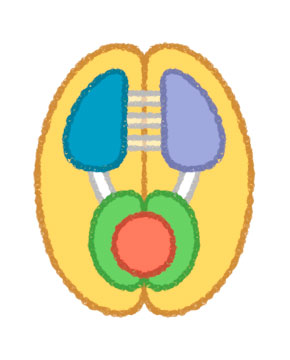
The main change compared to the working well brain is that the pink FF is larger and therefore more influential. It is not bright red (as in psychotic) but is sufficiently important to be doing some damage.
It is keeping arousal levels high and sensitive to certain stimuli in the environment and this is significantly eroding the capacity to live a life where needs are well met.
This in turn can easily transform into a self feeding vicious circle, which keeps people stuck and helpless and which thereby manifests in a wide range of depressive, anxious or addictive behaviours.
Psychotic
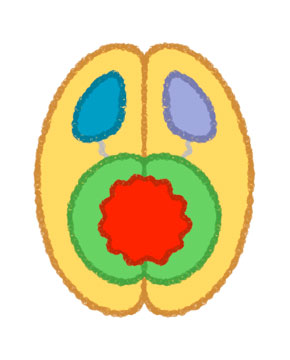
The psychotic or schizophrenic state can be understood as being lost in one’s unconscious processing and so being dominated by fears, metaphors, stories, images and remembrances that are not easily modified or mediated by what is actually happening in the real world.
The result is what may be called “waking dreams” where unreality and fearful suggestion dominate and paranoia can be explained by the attempt to resist the influence of the real world.
This is shown by the small size of the prefrontal cortex (Conscious Executing) relative to Unconscious Processing and the dominant and bright red Flight and Fight.
It is worth reading what the Human Givens Institute has to say about these “waking dreams “ .
Bipolar
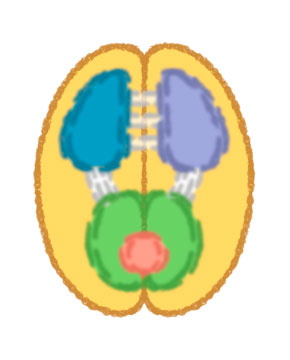
There is not much I can say on this, other than to recognise that it is a condition where brain functions do not work and relate healthily or normally. It can perhaps be thought of as where the boundaries between the three brain functions are unstable and interchangeable even.
The result is that mood varies and shifts between a high energy and creative strong focus caetextic type Conscious Executing and a flat and deadening psychotic type Unconscious Processing.
Left Caetextic
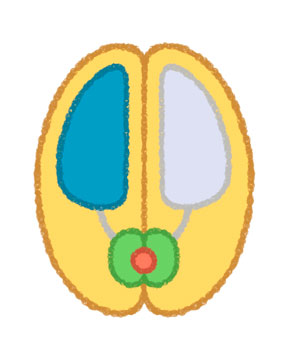
Right Caetextic

At the other end of the spectrum to psychosis brains, lies Caetextia – here Unconscious Processing is difficult to access which means more brain energy is in the present to attempt Conscious Executing. But this is hard to do without UP. Caetextia is a term invented by Jo Griffin and Ivan Tyrrell and is their explanation of what Asperger syndrome is all about. Caetextia is about the lack of context or of being able to make sense of what is going on. This lack creates anxiety and stress and hence a relatively strong FF within a small Unconscious Processing and a large and dominant, albeit lonely and so ineffective Conscious Executing.
There are both left and right dominated Caetextia according to Griffin and Tyrrell. Left dominated accord with the classic male brain aspergic – focused, controlling, literal, socially awkward, single track yet also all over the place. Right brained caetextics, often female are given to wild and uncontrolled takeovers of their consciousness, find themselves holding bizarre explanations and incomprehensible responses to what is happening to them.